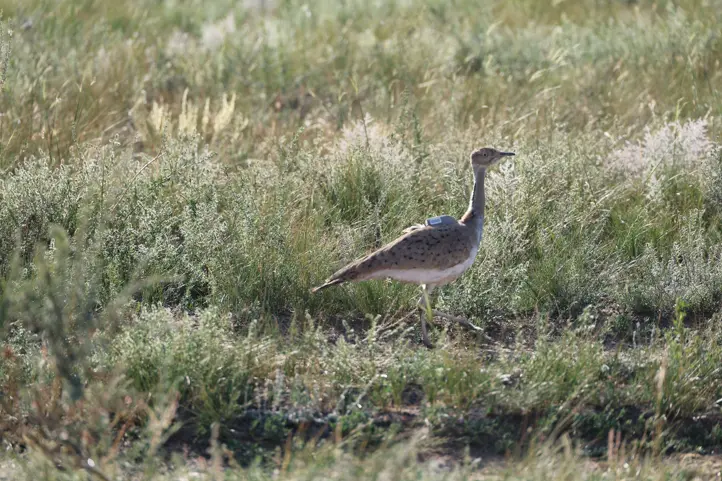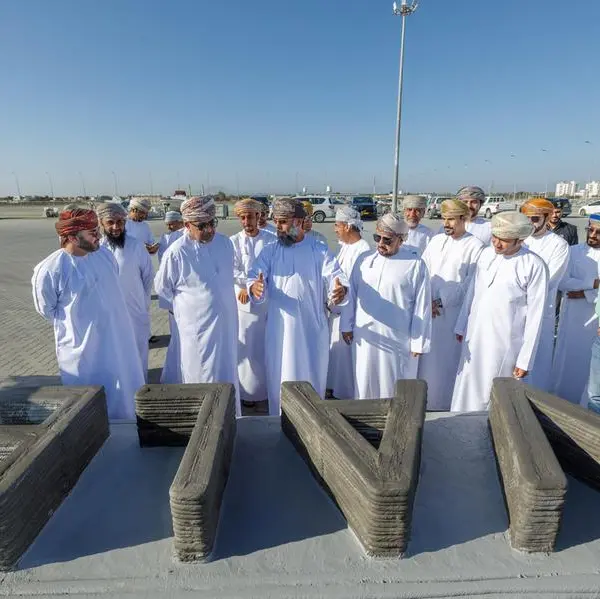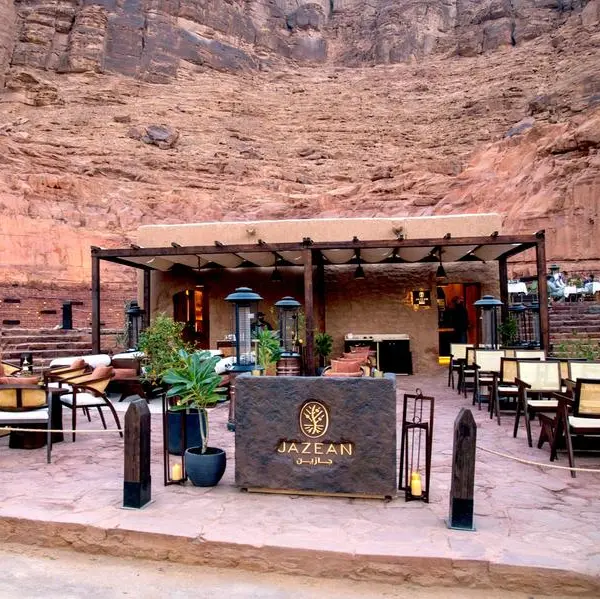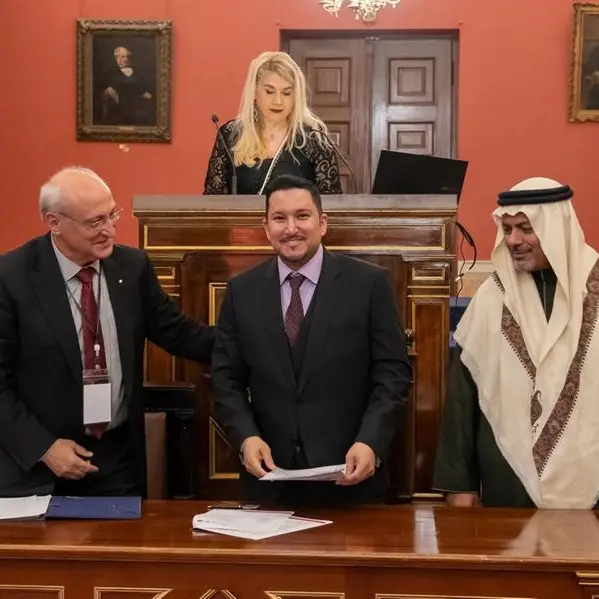PHOTO
- Pilot programme to reintroduce migratory bustards to the northernmost extent of their global distribution range
Abu Dhabi: The International Fund for Houbara Conservation (IFHC), has collaborated with the “Uvs Nuur Basin” Biosphere Reserve in the Republic of Tuva, Russia, to release a number of Asian houbara bustards in the northernmost boundary of the species’ global distribution range.
A total of 48 young Asian houbara, bred at the Sheikh Khalifa Houbara Breeding Centre in Kazakhstan, a centre under IFHC, were released in Uvs Nuur Basin.
These houbara bustards belong to the genetic lineage of Eastern Kazakhstan birds, which migrate over long distances. Scientific studies have shown they are the closest to the population that used to inhabit the Uvs Nuur Basin Lake area between Tuva and Mongolia.
To help release the birds, IFHC worked closely with the UAE embassy in Russia, which played a key role in addressing logistical challenges, coordinating communication, and ensuring all the necessary requirements were met.
IFHC also praised the efforts of Russia’s federal and national authorities as well as the country’s scientists and management of “Uvs Nuur Basin” Biosphere Reserve.
Ahead of the release of the Asian houbara bustards, the young birds were housed in spacious aviaries with minimal human interaction in Sheikh Khalifa Houbara Breeding Centre Kazakhstan (SKHBC-KZ). Their diet consisted of limited water and live food.
Additionally, as part of release sites selection, a number of appropriate locations in the northern region of the Uvs Nuur Basin Lake were explored by scientists after conducting field surveys between 2019 and 2022.
Of the 48 young Asian houbara, 30 birds have been tagged with GSM - GPS tracking devices to enable remote monitoring of their survival rates, dispersion, potential nesting, and autumn migration.
The data collected will be shared with the “All-Russian Research Institute for Environmental Protection” and “Uvs Nuur Basin” Biosphere Reserve’s officials. They will explore the data for further research that will help them plan future release projects and understand the sustainable management strategies on what it takes to successfully release houbara in the region.
The Republic of Tuva is situated between the Russian Siberian region to the south and Mongolia to the north, with Kyzyl as its capital city. The “Uvs Nuur Basin” Biosphere Reserve, which is contiguous with Mongolia's border, is part of Tuva. The reserve encompasses the northernmost section of the global range of the Asian houbara, a species classified as endangered in Russia.
Since 2019, no houbara bustards have been spotted in any field surveys that have been conducted, suggesting the possibility for the species’ extinction in the wild within this area. The last spotted houbara in that region was in 2005.
The release of the young Asian houbara bustards reaffirms the importance of IFHC’s partnership with the “Uvs Nuur Basin” Biosphere Reserve. This partnership aims to jointly undertake the study, restoration, and conservation efforts for both Asian houbara and the Great bustard. The Fund's experts collaborate with their Russian counterparts in field studies and research, working together to develop strategies for the preservation of both the Asian houbara and the Great bustard.
The Uvs Nuur Basin is home to a wide array of ecosystems for nesting of both the Asian houbara and the Great bustard, another endangered species that still exists in the area in limited numbers.
The “Uvs Nuur Basin” Biosphere Reserve places significant focus on the growth, protection, and recovery of both the Asian houbara and the Great bustard through international collaboration efforts. The Reserve has collaborated with neighbouring nature reserves in Mongolia to undertake scientific research, to protect the natural landscapes and biological diversity within the Uvs Nuur Basin ecosystems.
About the International Fund for Houbara Conservation
The International Fund for Houbara Conservation is an extension of the initiative started by the late Sheikh Zayed bin Sultan Al Nahyan, who established the Abu Dhabi Houbara Conservation Programme over four decades ago. This initiative aims to preserve houbara bustards, protect their natural habitats, and the species connected to them. It encompasses a comprehensive global strategy including scientific research, proposed protective measures, support for local communities, and the development of breeding and release programmes to enhance the wild populations of houbara.
The International Fund for Houbara Conservation was established in 2006 to carry forward the management and development of this programme on a global scale, while also enhancing its international partnerships throughout the range of houbara bustard distribution.
IFHC's list of international partners includes various countries across the houbara's distribution range in Asia and North Africa. This list comprises China, India, Jordan, Mongolia, Morocco, Saudi Arabia, and others. IFHC operates main centers for breeding, release, scientific research, and field studies in Abu Dhabi, Morocco, and Kazakhstan.
For more information, visit the website of the International Fund for Houbara Conservation: https://houbarafund.gov.ae/
For more information, please contact the Seven Media team.
Marah Halaw
Account Director


















